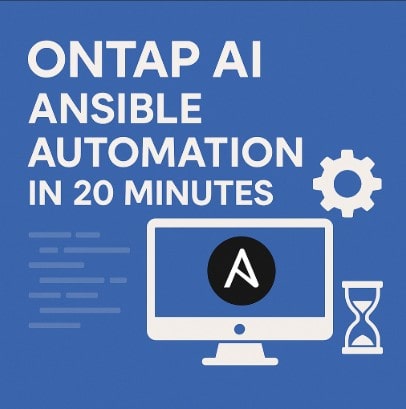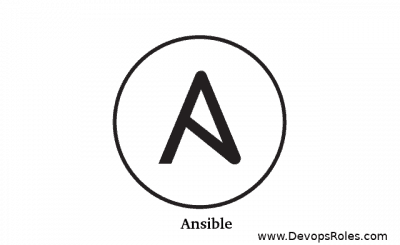Tired of spending hours manually configuring NetApp ONTAP AI? This guide shows you how to leverage the power of Ansible automation to streamline the process and deploy ONTAP AI in a mere 20 minutes. Whether you’re a seasoned DevOps engineer or a database administrator looking to improve efficiency, this tutorial provides a practical, step-by-step approach to automating your ONTAP AI deployments.
Table of Contents
- 1 Understanding the Power of Ansible for ONTAP AI Configuration
- 2 Step-by-Step Guide: Configuring ONTAP AI with Ansible in 20 Minutes
- 3 Use Cases and Examples
- 4 Frequently Asked Questions (FAQs)
- 4.1 Q1: What are the prerequisites for using Ansible to configure ONTAP AI?
- 4.2 Q2: How do I handle errors during playbook execution?
- 4.3 Q3: Can I use Ansible to manage multiple ONTAP AI instances?
- 4.4 Q4: Where can I find more information on NetApp Ansible modules?
- 4.5 Q5: How secure is using Ansible for ONTAP AI configuration?
- 5 Conclusion
Understanding the Power of Ansible for ONTAP AI Configuration
NetApp ONTAP AI offers powerful features for optimizing storage performance and efficiency. However, the initial configuration can be time-consuming and error-prone if done manually. Ansible, a leading automation tool, allows you to define your ONTAP AI configuration in a declarative manner, ensuring consistency and repeatability across different environments. This translates to significant time savings, reduced human error, and improved infrastructure management.
Why Choose Ansible?
- Agentless Architecture: Ansible doesn’t require agents on your target systems, simplifying deployment and management.
- Idempotency: Ansible playbooks can be run multiple times without causing unintended changes, ensuring consistent state.
- Declarative Approach: Define the desired state of your ONTAP AI configuration, and Ansible handles the details of achieving it.
- Community Support and Modules: Ansible boasts a large and active community, providing extensive support and pre-built modules for various technologies, including NetApp ONTAP.
Step-by-Step Guide: Configuring ONTAP AI with Ansible in 20 Minutes
This guide assumes you have a basic understanding of Ansible and have already installed it on a control machine with network access to your ONTAP system. You will also need the appropriate NetApp Ansible modules installed. You can install them using:
ansible-galaxy install netapp.ontap1. Inventory File
Create an Ansible inventory file (e.g., hosts.ini) containing the details of your ONTAP system:
[ontap_ai]
ontap_server ansible_host=192.168.1.100 ansible_user=admin ansible_password=your_password
Replace placeholders with your actual IP address, username, and password.
2. Ansible Playbook (ontap_ai_config.yml)
Create an Ansible playbook to define the ONTAP AI configuration. This example shows basic configuration; you can customize it extensively based on your needs:
---
- hosts: ontap_ai
become: true
tasks:
- name: Enable ONTAP AI
ontap_system:
cluster: "{{ cluster_name }}"
state: present
api_user: "{{ api_user }}"
api_password: "{{ api_password }}"
- name: Configure ONTAP AI settings (Example - adjust as needed)
ontap_ai_config:
cluster: "{{ cluster_name }}"
feature_flag: "enable"
param1: value1
param2: value2
- name: Verify ONTAP AI status
ontap_system:
cluster: "{{ cluster_name }}"
state: "present"
api_user: "{{ api_user }}"
api_password: "{{ api_password }}"
register: ontap_status
- debug:
msg: "ONTAP AI Status: {{ ontap_status }}"
vars:
cluster_name: "my_cluster" # Replace with your cluster name.
api_user: "admin" # Replace with the API user for ONTAP AI
api_password: "your_api_password" # Replace with the API password.3. Running the Playbook
Execute the playbook using the following command:
ansible-playbook ontap_ai_config.yml -i hosts.iniThis will automate the configuration of ONTAP AI according to the specifications in your playbook. Monitor the output for any errors or warnings. Remember to replace the placeholder values in the playbook with your actual cluster name, API credentials, and desired configuration parameters.
Use Cases and Examples
Basic Scenario: Enabling ONTAP AI
The playbook above demonstrates a basic use case: enabling ONTAP AI and setting initial parameters. You can expand this to include more granular control over specific AI features.
Advanced Scenario: Automated Performance Tuning
Ansible can be used to automate more complex tasks, such as dynamically adjusting ONTAP AI parameters based on real-time performance metrics. You could create a playbook that monitors storage performance and automatically adjusts deduplication or compression settings to optimize resource utilization. This would require integrating Ansible with monitoring tools and using conditional logic within your playbook.
Example: Integrating with Other Tools
You can integrate this Ansible-based ONTAP AI configuration with other automation tools within your CI/CD pipeline. For instance, you can trigger the Ansible playbook as part of a larger deployment process, ensuring consistent and automated provisioning of your storage infrastructure.
Frequently Asked Questions (FAQs)
Q1: What are the prerequisites for using Ansible to configure ONTAP AI?
You need Ansible installed on a control machine with network connectivity to your ONTAP system. The NetApp Ansible modules for ONTAP must also be installed. Ensure you have appropriate user credentials with sufficient permissions to manage ONTAP AI.
Q2: How do I handle errors during playbook execution?
Ansible provides detailed error reporting. Examine the playbook output carefully for error messages. These messages often pinpoint the source of the problem (e.g., incorrect credentials, network issues, invalid configuration parameters). Ansible also supports error handling mechanisms within playbooks, allowing you to define custom actions in response to errors.
Q3: Can I use Ansible to manage multiple ONTAP AI instances?
Yes, Ansible’s inventory system allows you to manage multiple ONTAP AI instances simultaneously. Define each instance in your inventory file, and then use Ansible’s group functionality to target specific groups of instances within your playbook.
Q4: Where can I find more information on NetApp Ansible modules?
Consult the official NetApp documentation and the Ansible Galaxy website for detailed information on available modules and their usage. The community forums are also valuable resources for troubleshooting and sharing best practices.
Q5: How secure is using Ansible for ONTAP AI configuration?
Security is paramount. Never hardcode sensitive credentials (passwords, API keys) directly into your playbooks. Use Ansible vault to securely store sensitive information and manage access controls. Employ secure network practices and regularly update Ansible and its modules to mitigate potential vulnerabilities.

Conclusion
Automating ONTAP AI configuration with Ansible offers significant advantages in terms of speed, efficiency, and consistency. This guide provides a foundation for streamlining your ONTAP AI deployments and integrating them into broader automation workflows. By mastering the techniques outlined here, you can significantly improve your storage infrastructure management and free up valuable time for other critical tasks. Remember to always consult the official NetApp documentation and Ansible documentation for the most up-to-date information and best practices. Prioritize secure credential management and regularly update your Ansible environment to ensure a robust and secure automation solution. Thank you for reading the DevopsRoles page!
External Links:

